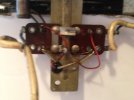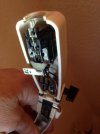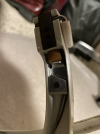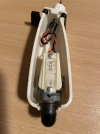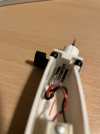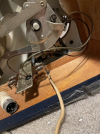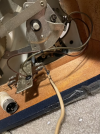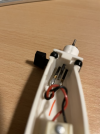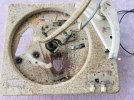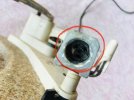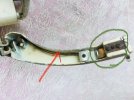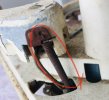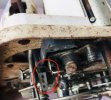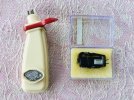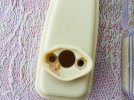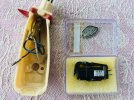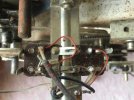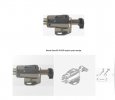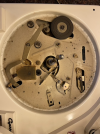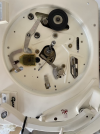Thanks, only happy to help. Actually what makes these projects interesting is that not too many enthusiasts in the modern world have actually experienced ceramic cartridges. If one asks around, one will be told - don't use them, they will damage your records, they are for cheap record players and have very poor sound quality, etc. These days, ceramic cartridges are usually associated with China and cheap Crosley turntables. A person who therefore shows interest in a ceramic cartridge is often discouraged straight away.
The reality is rather different. Yes a lot of the ceramics were made for low cost portable record players especially in the 1970s and early 1980s but at one point in time, especially in the 1950s and 1960, they were at the peak of their popularity and used in hifi applications, quite generously.
Before getting to cartridge types, it is important to note that ceramic cartridges do not damage records. Most records that have suffered groove damage when played with ceramic carts are due to the following reasons:
1) worn stylus
2) incorrect tonearm alignment
3) record stacking in changers (as the tracking angle of the stylus keep changing)
4) very heavy tonearms without VTF adjustment
5) using the 78 stylus to play microgroove records
6) careless use especially when manually maneuvering the tonearm, not cleaning records and not cleaning the stylus
So the myth is busted, Ceramic cartridges wont damage your records if you use a good clean stylus, have a light weight tonearm tracking at not more than 4-6 gms, when using a changer, dont stack more than 2 records when playing microgroove records (LPs, EPs, 45s) and use the correct stylus type - which is not to forget to switch between microgroove and 78 styli, if you play 78s. Ceramic cartridges come usually with 2 stylus types - (1) sapphire and (2) diamond. I haven't noticed any audible difference in the sound quality but the diamond stylus tends to track better as it does not wear easily. The lifespan of diamond stylus is more.
Now to the cartridge types. There are many brands out there from the old times. Ronnette, Sonotone, Asiatic, BSR, Garrard, etc were some of the common ones, while Philips had some great ones, but a little non-standard as they are primarily for use with Philips equipment. Here in India, the options available back then were Philips, HMV and EEI. Philips often sold their ceramic cartridges with diamond styli.
I have been playing around with ceramics since my childhood and my father had been experimenting with these in hi-fi setups since the 1960s. To start with, ceramic cartridges are high output types with outputs ranging from about 0.5v to about 1v on an average when tracking with optimum VTF. I recollect my father telling me stories of how he could increase the output marginally by increasing the VFT although I have never tried it myself for obvious reasons.
You have asked about the difference between Sonotone cartridge types. My knowledge of Sonotone is only limited to online reading and my experience with the 3T (mono) and 8T (stereo) cartridges. I do know that if you see a "D" in the model number (which is actually quite rare), it meant that the stylus was a diamond stylus. I also recollect my father telling me (during those numerous father-son electronics conversations) that if the same cartridge was available in 2 versions, they were likely to be mono and stereo versions and if there was a 2 as the suffix of one of these (even though both versions had the same model number), it meant that the one without the '2' suffix was a low output version and the '2' version was a higher output version. There is no way I can verify this but I recollect my father telling me this.
Regarding the Ronette cartridge which you have mentioned, I think it will work beautifully with your RC210. You don't have to punch front of the headshell as it is already punched for the flip-over knob (if you see my headshell, the front is not punched). It is also a half-inch mount type so it should fit your headshell perfectly. However I suggest you keep an eye on the seating of the cartridge in the headshell. If you feel that the cart sits too deep inside the headshell, then you can use a spacer (you can make one yourself) between the headshell and the cartridge while mounting it. If the cartridge sits too deep inside the headshell, the rim of the underside of the headshell will make contact with the record surface. Also ensure that you get the pin configuration (known as pinout) of the cartridge correct when wiring it to the headshell. Never solder wires directly to the cartridge. Use headshell wire clips on the cartridge side while you can carefully solder the other end to the headshell pins. Checking the continuity from the headshell pins (with the headshell mounted on the tonearm) to the tag board below the tonearm, will help you ascertain the correct line and ground wiring pins for each channel.
Keep an eye on the VTF once you have installed your cartridge. It is good to have a small digital jeweler's weighing scale for checking this. For Ronnette, Sonotone, etc a good tracking weight would be 6gms for record changers (if the VTF is less, the tonearm may skate when the changer is operating in auto-mode).
Some useful information on Sonotone Cartridge types and their specs can be had from
here
Lastly and most importantly, you havent mentioned what amplifier you plan to connect your RC210 with stereo ceramic cart, to. This is a very important aspect. Most vintage amplifiers from the 1950s and 60s had 2 phono options, for Ceramic/Crystal and Magnetic Cartridges, however as we entered the 70s, and with the advent of more affordable Magnetic carts (from the likes of Shure for example), Ceramics started fading from hi-fi use and most hi-fi enthusiasts switched to Magnetic. As a result, the ceramic phono input disappeared from almost all amplifiers. However due to the high output of ceramic carts, they could still be connected to the Aux (auxiliary) input of any amp and they would play. However when used with this method, the sound quality would completely lack bass response (low frequencies) and you'd hear some kind of screechy music (another reason why folk thought ceramic carts produced low quality sound). Theoretically, all ceramic cartridges are designed to accommodate RIAA equalization without any external RIAA equalization network, a key factor for ceramics is input impedance balancing or matching. Ceramic carts are designed to work with high impedance amplifier inputs operating at 1M or higher, while the average amplifier Aux input offers an almost standard 47k input impedance. This mismatch result in a complete loss of low frequencies.
You have 2 options as a solution to the above issue with input impedance mismatch. You can:
1) you can use a small passive network between the cartridge and the input of the amplifier - these work extremely well if the amplifier has a sensitive input or you are attempting to connect your ceramic cartridge to a magnetic phono input. The flip side of this approach is that there is an obvious gain loss. Also when using a passive network with a magnetic input, proper isolation and grounding is required to reduce hum and noise. Here is an example from the Sonotone manual.
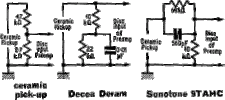
2) you can use a ceramic phonostage which in my opinion is the best option. A ceramic phonostage will take care of the input impedence matching aspect and will also provide adequate gain suitable for any amplifier type. If you have knowledge of basic electronics, you can build one yourself with a few components and some free time. The phonostage produces best results and is noise free, especially if mounted as close as possible to the record changer (you can even fix it somewhere near that tone arm wiring tag board) and grounded properly with the record changer chassis. Here are 2 examples, one using a IC and the other a transistor (for stereo you will require one for each channel):
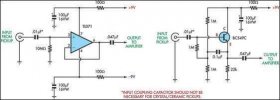
Sorry, that a lot of reading but its good to know all this stuff when going on a ceramic adventure. If implemented correctly, your RC210 changer with its stereo ceramic cartridge can be made to sound outstanding, even challenging some magnetic cartridge based systems

I also suggest you go through the following reading materials:
1) History of Sonotone and everything to know about Sonotone ceramic cartridges -
click here
2) Great user experiences, with tips and tricks on how to get the best out of ceramic cartridges -
click here (there are 25 pages to read  )
)
Important: when taking out that Garrard emblem on the headshell (carefully push it out through the large hole, from inside the headshell), be careful not to dent it or loose it. A replacement is hard to find and your headshell wont look complete without it. When putting it back after mounting the cartridge, do so only after you've properly calibrated the cart and use perhaps a light dab of rubber-based glue as you should be able to take it out again, if you want to change the cartridge again, at some point.

All the very best!


